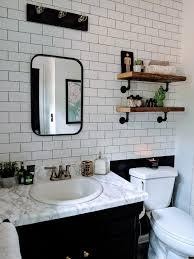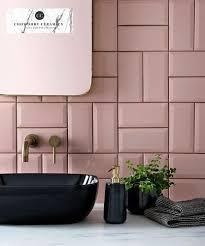
When I began planning my kitchen renovation, I was certain that I wanted to add kitchen subway tiles. Did I understand how to properly lay subway tiles? Nope. I have no idea. However, I was quite ready to give it a go. I believe the completed results demonstrate that I was effective!
The installation of the kitchen subway tiles was straightforward. It was a bit time-consuming, but I gained a great deal of knowledge. And it was definitely worth it since now I get to enjoy this lovely subway tile every day!
To begin, allow me to list all of the supplies that you will need to accomplish the subway tiles installation.
Suggestions for Installing a Subway Tile Kitchen Backsplash
- Notched trowel (for spreading glue)
- Margin trowel (for mixing material)
- Tile spacers
- Rubber grout float (for applying grout)
- Sponge
- Disposable gloves
- 5-gallon bucket
- Protective eyewear
I discovered a set that has almost all of these instruments in one convenient box!
Now that you’ve gathered your materials, let’s discuss how to install kitchen subway tiles. Although this technique is applicable to any kitchen subway tiles tip.
Therefore, the first step should be to remove the current backslash and restore the drywall. My previous backsplash was actually removed during the process of removing my previous countertops. Additionally, and fortunately for me, they fixed the drywall damage.
The only preparations I made were to cover my new quartz worktops and to mount a little board beneath my stove. This was done to aid in the setting of the subway tiles in the glue.
After that, I removed all of the outlet covers. The thinset was now ready to be mixed and the individual tiles began to be installed. Tip: Avoid mixing all of your thin-set adhesives in one batch. Placing all the individual tiles, inserting subway tiles spacers, and cutting around outlets takes time. Because you do not want the thin-set to dry out, work in tiny quantities.
I chose to begin the installation of the tiles in the middle of my kitchen and work my way out and upward. My first subway tiles were laid just beneath my kitchen sink faucet. I would just use the notched trowel to apply a thin-set on the wall, then lay the subway tiles on top and push into the wall. In difficult-to-reach spots, I would just put thin-set glue on the back of the subway tiles.
I understand that some people begin at the end of a wall and work their way around, but I knew I would be gazing at those tiles above my sink every time I stood there. As a result of my perfectionism, I wanted those tiles to be dead center. And, even now that the project is complete, I believe it was a wise option! Simply something to consider before laying the first subway tiles. You can read about Avoid these mistakes when laying your subway tiles by visiting http://nosdrift.com/avoid-these-mistakes-when-laying-your-subway-tiles/

The most enjoyable aspect of the project was installing the subway tiles. To my mind, the most difficult task was cutting the tiles. As this was my first time using a wet saw, I experimented on some subway tiles to get a feel for how it sliced. At first, when I put subway tiles on the saw, the final result was a jagged nick. This occurred because I was not putting the subway tiles through the saw with the same amount of force from beginning to finish. Thus, once I found it out, cutting was a breeze!
I discovered the most effective method for cutting off subway tiles was to place it near the item and mark it with a pencil. The subway tiles were then taken to the saw. To make smaller notched cuts, tilt the subway tiles so the saw cuts all the way through the rear without cutting too deeply into the front.
I utilized bullnose subway tiles at the end of the wall to provide a great clean, professional finish. However, I only had a limited number of bullnose tiles (like 8 total). I was attempting to cut out the little triangular piece but kept making mistakes. Eventually, I cut a portion that I felt was suitable for usage. And, as fate would have it, I had just enough bullnose remaining to complete both ends of the kitchen walls. Hallelujah!
The perfectionist in me fought with this corner cut, but I couldn’t care less about the rest! I knew those outlet covers would be my savior. I completed a big portion of the backsplash on the first day.
I chose a light gray color called Mist for my grout. I’m very pleased I chose colored grout versus white. While white grout conceals more faults, I like the contrast that gray grout provides. Oh, and I made certain to get grout that already had a sealing ingredient. Nobody has time for further sealing!
Here is my most important tip for grouting. As with the thin-set adhesive, it should be mixed in tiny volumes. I made a serious error here and combined everything at once. SIGNIFICANT MISTAKE. Why? Allow me to explain.
When I began the grouting procedure, I mixed the grout and then used a rubber grout beater to push the grout into the spaces between the tiles. Naturally, there was extra grout on the tiles, which needed to be washed away with a damp sponge. Cover outlets with painter’s tape to prevent grout from getting into the outlet.
If the extra grout is not removed before it hardens, it must be scraped off. Thus, herein lays the rub. Due to the fact that I mixed an excessive amount of grout at once, it dried quicker than I could apply it and washed away the excess. As a result, I was forced to work quite quickly! I even requested Chris to assist me during his lunch break since I was in a state of panic. So…again. Prepare tiny quantities in small batches and take your time. If I could have one redo, I would choose this one. Click here to read more about Interior Designers Share the Home Decor Tips Everyone Should Know Before They Turn 30.


